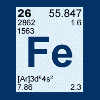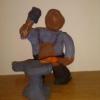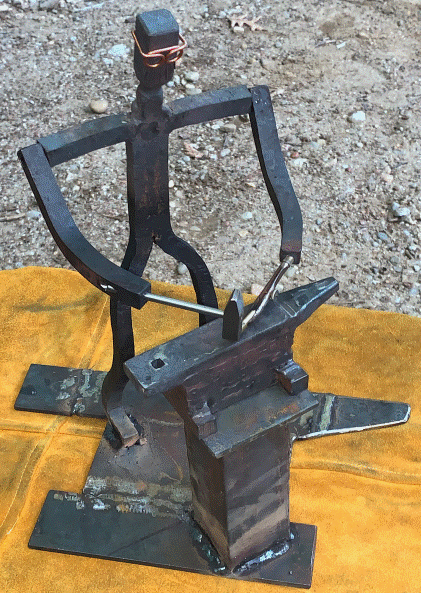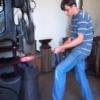-
Posts
381 -
Joined
-
Last visited
About caotropheus

Profile Information
-
Gender
Not Telling
-
Location
Israel
Recent Profile Visitors
7,860 profile views
-
Here it is a video of the restauration
-
I am not sure but it looks like a German vice. Make a search for "RB Schraubstock" in google.de (Germany) and see the results.
-

Are these good anvils with side swages?
caotropheus replied to Jacksman's topic in Anvils, Swage Blocks, and Mandrels
I did not check these anvils/swages by myself but it looks like they were made from thick plate cutoffs, probably mild steel. If they were cheap enough, yes I would buy them (leave them if they are cast iron). -
Thank you for your answers. Frosty, I tried to use the chalk or flour method and the result was even less intelligible . I leave you here a picture of the final product
-
I cleaned the vice with some electrolysis and for my surprise there are some markings under all the layers of paint and rust. Once again I appeal for the kindness of the specialists on German tooling is they can identify the manufacturer of the vice Also the vice is made of wrought iron, making it older then I thought. If you guys can help me date the vice that would be great. Thank you PS: I am making a video on the restoration
-
Bonnskij, the short answer to your question is YES. Before I bolted the flypress stand to the floor, I had to move it back to place on a weekly basis. It would move a couple of cm every time I used it. I agree with JHCC, try to secure it to something like add mass to the base, silicone it, brace it to a heavy working bench. Do not brace it to the wall, most probably, it will pull a portion of the wall...
-
A "couple" of jewelry/hand vices all of them needing repair.
-
Thank you for the reply Frosty. When you say that I "...could REALLY use a couple thread files, they come in many TPI and pitches, SAE and Metric" you mean to repair the threads of the mounting plate and the pivot bolt for the moveable jaw, right? I did not think about that but, it is an idea I will take into consideration. Thanks PS: For the price I payed for the vice, yes I also have to consider my self caotropheus "The Lucky".
-
That is the question that I have been looking for an answer for some time but I haven't found a satisfying answer. Modern process of steels production appeared by the second half of the XIX century. So, my question is until what decade of the XIX/XX century were blacksmith tools like anvils and vices manufactured with wrought iron? Thanks
-
Thank you Julianb First I learnt with you a bit more about German tools. Again, I ought to refer that once one discovers German tools, no other tools will be ever used... All my vices are German, anvils are German, preferred hammer German and so on. If I was limited to keep a single vice to "do it all" that would be a Heuer front 175/180 Second, I ended up by buying the Schlosserschraubstock I pictured in more detail.
-
How big/heavy is she? what is the counterweight weight?
-
Wow, now you talk about it, you right, it never occurred to me that might be the case (broken leg). Probably someone wanted to fit the vice in a limited space and this was the solution for a long leg? These and other question would get better answers from a German blacksmith who knows better the purpose of these tools.
-
So, these type of vices may be considered "blacksmith bench vises"? Thanks






